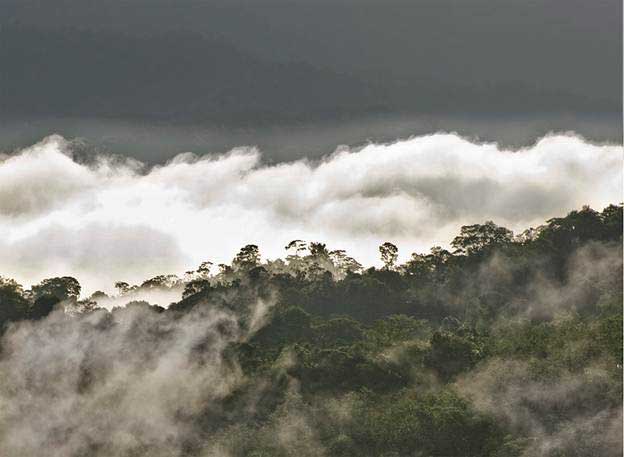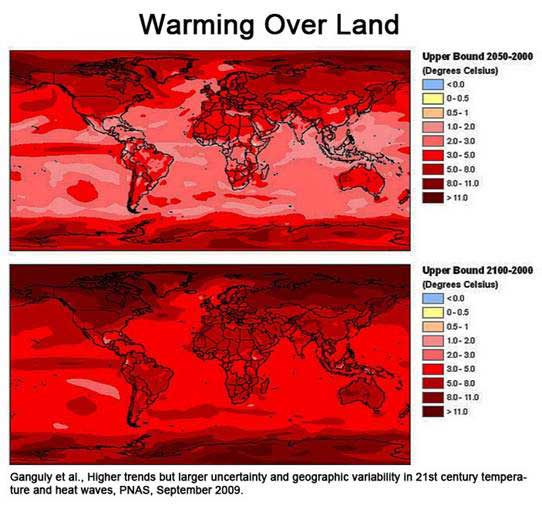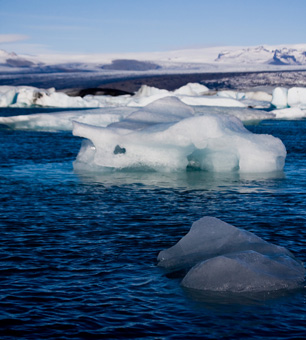Mega reports on climate change are piling up almost as fast as the extreme unprecedented weather events. The latest by the World Bank is just another summary of conservative consensus climate science. Impacts are already worse than stated, but fortunately, solutions could be easier than are commonly understood.
As incredible as it sounds, the effects of climate change are worse than the World Bank Report says in its latest report: “Turn Down the Heat: Why a 4 degree C world Must be Avoided,” a summary of the latest findings in climate science. Much of this work is based on 1998 climate change scenarios and the Intergovernmental Panel on Climate Change consensus position from 2007. Because science takes years and years to happen, a lot of this research is based on a world where Kyoto was still a part of the deal. But in our world today, instead of working on climate pollution emissions reductions, we are now emitting more than was imagined in the 1998 worst-case scenario. Even though much of the work in the World Bank Report is the latest and greatest, it is still largely based in research on one of the “middle-of-the-road” climate change scenarios.
This is why these consensus reports are so dangerous. It’s not that they project global catastrophe, it is that those projections are based on a consensus opinion. Whenever you get more than one specialist of any kind agreeing on a position that satisfies more than that one specialist, the result is almost always a group opinion that is watered down. So alone, the scientific consensus on climate change is not as extreme as any of its given parts. It’s easy to agree on the middle-of-the road scenario now that the “best-case” scenario is so obviously a pipe dream.
The consensus opinion includes the solutions as well as the impacts. What the latest forward-leaning findings are now reporting is that treating climate pollution using existing technologies will be no more difficult than supplying Earth with clean drinking water every day. This is hardly a path that destroys our economies. These existing technologies are things like efficiency improvements, electric and hybrid vehicles, fluorescent light bulbs, wind, solar, wave, tidal, carbon capture and storage (CSS), carbon sequestration and integrated gasification combined cycle (IGCC), natural gas combined cycle (NGCC), saline aquifer sequestration, mineral sequestration, oil field disposal – the list is a mile long.
 New technologies now in the field-proving stages are in addition to the economic evaluations that show the cost of treating climate pollution being no different than that for supplying our society with clean drinking water. These “new” technologies have the promise of being far less expensive than existing technologies.
New technologies now in the field-proving stages are in addition to the economic evaluations that show the cost of treating climate pollution being no different than that for supplying our society with clean drinking water. These “new” technologies have the promise of being far less expensive than existing technologies.
More interesting and likely far more valuable is the up and coming technology of air capture. Traditionally, air capture has been seen as infeasible because of the low concentration of CO2 compared to smokestack concentrations from energy generation or industrial processes. But this is changing. Billionaires across the globe are investing in carbon capture and sequestration technologies to meet the climate change challenge. Outfits like SRI in California are looking to capitalize on the vast amount of money soon to be spent on cleaning up climate pollution by sucking CO2 straight out of the air. The future could be brighter than we think
While “Heat” is a vast scientific summary of all the major research, it focuses on global average temperature change and largely leaves out what is likely the most important thing about climate change impacts. It is a little thing involving the calculation of averages, but it means a lot to us humans who live on land. Earth’s oceans cool our climate considerably. This is why the report’s projection of seven degrees Fahrenheit of warming will be so catastrophic. Seven degrees is a lot to ecosystems but not to air-conditioned humans. Warming over land, however, is much greater than over oceans, and this skews the average considerably. What we will actually experience is a lot more warming than the average global warming projections reported by “Heat” suggest.
More evidence of the conservative (small “c”) consensus can be found in “Heat.” It tells us the Amazon will be devastated by global warming in the future. But a report in April 2011, by a team from the University of Boston, NASA’s Ames Research Center and the University of Viçosa, Brazil, tells us that the Amazon has already changed from a carbon sink to a carbon source, emitting greenhouse gases at a rate that is 75 percent as large as that of the entire United States. The cause is the death of over two billion trees, say the paper’s authors. They were killed by two massive droughts: a 100-year drought in 2005 and one four times as extreme, in 2010.
 The Amazon has unexpectedly flipped from a carbon sink to a carbon source nearly as big as all emissions from the United States. The reason is drought: a 100-year drought in 2005 and one four times more extreme, in 2010, that killed more than 2 billion trees.
The Amazon has unexpectedly flipped from a carbon sink to a carbon source nearly as big as all emissions from the United States. The reason is drought: a 100-year drought in 2005 and one four times more extreme, in 2010, that killed more than 2 billion trees.
Billions more have been killed across North America. Over 64 million acres have been impacted in the Rockies in the United States and Canada, where a devastating pine beetle outbreak remains uncontrolled. Extreme cold is the beetle’s only enemy, and extreme cold has gone away. Warming is twice as much or more than the global average in the Rockies and high latitudes because of the snow and ice feedback. This is caused by warming that melts snow a little earlier, allowing for a longer hot season. Because snow reflects nine times more energy harmlessly back into space than does earth, rock, water or vegetation, more warming is created. This feeds back into more snowmelt even earlier, and the cycle continues in a rapid warming spiral.
The Texas Forest Service tells us that the drought in the South Central United States in 2011 killed 301 million trees. Findings in Nature Geoscience, by a team from the University of Guelph in Ontario, Canada, together with scientists from the US Geological Survey and the US Forest Service, tells us that the black spruce forest of Alaska (much of the forested area in Alaska) also has now changed from a carbon sink to a carbon source. The team tells us that Alaska’s CO2 emissions from increased forest fires due to climate warming is about equal to all of the emissions from all of Canada’s forest fires during the period 1959-1999.
Research published in Nature Climate Change tells us that forests in the Canadian Rockies are dying 10 times faster than they did 50 years ago, and another piece of research by the US Geological Survey in 2009 reveals that in about the same time frame, forest mortality across the western United States increased five times. Both studies are careful to mention that the big pine beetle outbreak and increased forest fires are not included in their work. Both studies in the Rockies look at long-term evaluation (100 years plus) of old growth forests not impacted by logging.
What this means is that tree death has increased from roughly 0.5 percent per year to 5 percent per year. In 20 years, the average tree age and its associated carbon sequestration (capture and storage) capacity will be one-quarter what it is today – in just 20 years – not only across high altitudes and high latitudes in North America, but across the world.
“Heat” tells us the average global temperature will rise by seven degrees across the planet by the end of the century. This is not really a whole lot of warming to you and me. But the crazy part is not about how much damage seven degrees of warming will do to many global ecosystems. Seven degrees is the average across the planet. It will warm much more over land areas.
Our oceans are the reason why our climate has not caught up to our greenhouse gas emissions. We all hear that there is a lot more warming “in the pipeline.” In other words, greenhouse gases already emitted will cause additional warming even if we stopped all emissions tomorrow morning. Cool ocean water and cooling from polar ice are both responsible. The refrigerator door has been left open, and it will take decades to generations for the oceans to warm up. So they cool our climate in the meantime. Different studies from NASA, Columbia and the University of California, Santa Barbara tell us the additional warming will be between 2.5 and 8 degrees Fahrenheit. Then again, these evaluations are based on the middle-of-the-road scenario, so the actual warming in the pipeline is probably a lot more.
So all this cool ocean water cools that air over the oceans. Globally, because oceans cover more than two-thirds of earth, this means that the temperature over land will warm more than twice the global average – wow!
In September 2009, research workers at the Oak Ridge National Laboratory, Notre Dame, and the National Center for Atmospheric Research tell us that because emissions are now along the path of the worst-case scenario, we should be focusing our understanding of future (and current) changes based on this scenario, not the middle-of-the road (A1B) scenario. What the first few sentences of the report states is telling: “Recent observations of global-average emissions show higher trajectories than the worst-case (A1FI) scenario reported in IPCC AR4 (Intergovernmental Panel on Climate Change 2007 Report). Average A1FI temperatures trend higher than the best-case B1 as well as the relatively worse-case A2 scenario.” (The IPCC scenarios include 40 different futures.)
This team went on to model the 1998 worst-case climate scenario from the 2007 IPCC report instead of the middle-of-the-road scenario used in so many of the research works evaluated in “Heat.” The latest generation models also use a high-resolution framework that can show much greater detail than before. What these models are now telling us backs up the “averaging effect” that the oceans have on the global temperature average. Their overall findings for the global average temperature increase under the worst-case scenario are little different from the IPCC consensus position that “Heat” discusses, it’s the difference between warming over land and warming over the oceans that will cause all the chaos.
What Auroop R. Ganguly and colleagues tell us is that across the vast majority of the North American continent and most land masses on Earth, by just 2050, we can expect 14.4 degrees Fahrenheit of warming. By 2100, it’s an unthinkable 22 degrees.
Caption: Research from Oak Ridge National Laboratory, Notre Dame, and the National Center for Atmospheric Research shows warming over land that is far in excess of what is commonly understood. Much of this is because of the averaging effect of global temperature differences between those over land and over water.
So now we can begin to see why this World Bank Report is so strident in its findings. Only, what will happen in reality is likely much worse than what the World Bank Report recites.
But all is not lost. I already mentioned that the solutions will be no more difficult than supplying humanity with clean drinking water, and I will get back to that, but first I need to add a little bit of non-consensus knowledge to an assertion that “Heat” makes. Even before that let me clarify a little about the research findings I am reporting.
These individual findings are on the leading edge of science. As is often the case with leading edge science, there is dissention in the scientific community about validity. What we have been seeing in climate change literature is what climate scientists have been warning us would happen for a couple of decades now: that if we did not reduce emissions, impacts would be more extreme and happen faster. Much of the consensus knowledge about climate change today is relatively old. It takes a half decade or more for enough knowledge to be gained so that the consensus can begin to acknowledge the changes. This is what is happening across climate science these days. The latest reports are validating the warnings. Yet, the body of science is still young; the conservative consensus is reticent to change.
So “Heat” tells us that large portions of Earth will become uninhabitable because of desertification caused by warming. The desertification that we will actually endure is a lot more than anticipated in “Heat” because our emissions are so much greater. They are fifty percent greater than in 1988, and since 1988, we have emitted 87 percent of the total amount of greenhouse gases mankind has emitted since we started emitting.
Even so, vast desertification – even coming much sooner than the consensus tells us – will not render large tracts of developed nations uninhabitable. There is this little thing called air conditioning you see. While non-desert ecosystems will collapse, they will be replaced by desert ecosystems that can handle the heat and dryness. Extinctions will come and go, environmental chaos will reign, blah, blah, blah. All the while we will sit comfortably in our air-conditioned homes and offices.
Food-growing regions will diminish or disappear when groundwater runs out, but agriculture areas will arise. The Amazon for instance, will likely not become a desert overnight. Those Brazilians will continue with their agricultural development, and output will in all likelihood increase greatly, at least for the next couple of decades or generations.
In developed nations everything will become more expensive, but we have the cash to pay for it. The world however is not made up of only “developed nations.” It’s hard to imagine that our society could let things go this far, but if it does, the warming does not stop – it gets worse even faster.
Now let me finish on a high note, also not reported with gusto in “heat.” Authoritative voices tell us climate change is not real, that it is a scientific conspiracy, that it is a natural cycle soon to end and that it will be good for society. These same confused voices that are telling us all of these things at the same time are the voices that tell us that the solutions to climate change will ruin our economies. The vast majority of credentialed climate specialists say nothing of the sort. Richard Alley, Evan Pugh Professor of Geosciences at Penn State University, one of the lead authors of the 2001 and 2007 IPCC Reports, member of the United States National Academy of Sciences and one of the pivotal international researchers in climate science, tells us in his book Earth: the Operators’ Manual, that about 100 reports have been published concerning the economic impacts of the solutions to climate change, and they are focusing in on one thing.
The solutions to cleaning up climate pollution, using existing technologies, will cost about one percent of global gross domestic product (GDP) per year for 100 years. The astonishing thing to understand about this one percent of global GDP – this $540 billion a year – is that it is little different from what we have spent on our efforts to provide safe drinking water across the planet every year for the last 100 years. It is little different from what we spend on the US military every year not counting wars, or what we spend on advertising every year across the planet. It is little different than the normal economic costs to our nation every year because of normal inclement weather – rain, snow, heat, cold, wind, flooding and drought. It is four times less than what we spend on health care every year in the United States alone, based on the annual 2000 to 2009 average that does not include Obamacare. And remember, this is using existing technologies. New technologies will significantly reduce or even convert these costs into profits.
Cleaning up climate pollution across the planet, in ways that we are already doing today, will cost far less than what we spend on health care every year – just in the US alone. The “voices” of vested interests are very powerful. Their money has created doubt that threatens the existence of life on this planet. They did not do this purposefully; they did it because of greed, ignorance, innocence and the pressures of their respective industries’ economics. Their billions, and their quest for billions more, has allowed them to ignore, for whatever reasons, the dire warnings.
There are always a few scientists that disagree. In 2010, 97 to 98 percent of actively publishing climate scientists support the consensus position. Should we trust the few or the many?
5 Days Left: All gifts to Truthout now matched!
From now until the end of the year, all donations to Truthout will be matched dollar for dollar up to $50,000! Thanks to a generous supporter, your one-time gift today will be matched immediately. As well, your monthly donation will be matched for the whole first year, doubling your impact.
We have just 5 days left to raise $50,000 and receive the full match.
This matching gift comes at a critical time. As Trump attempts to silence dissenting voices and oppositional nonprofits, reader support is our best defense against the right-wing agenda.
Help Truthout confront Trump’s fascism in 2026, and have your donation matched now!
